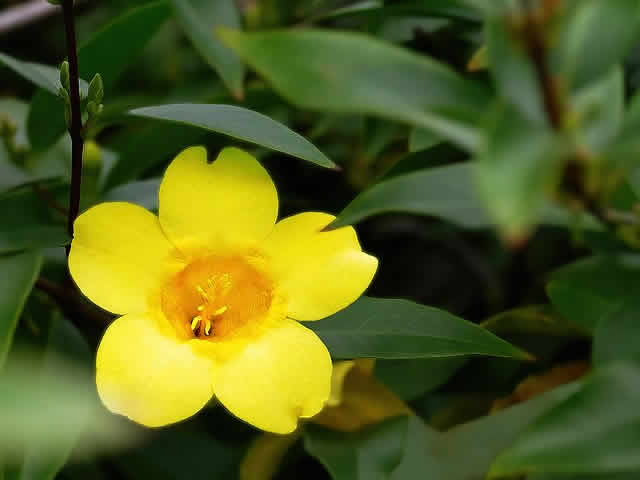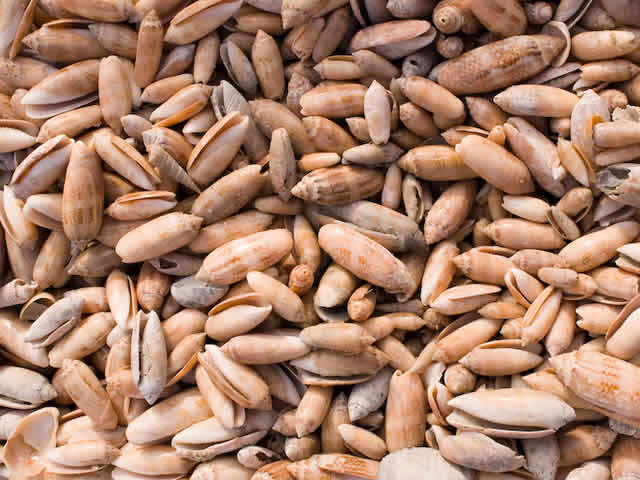South Carolina Facts
South Carolina Economy
South Carolina's economy was ranked the 25th largest in the United States based on GDP (Gross Domestic Product) in 2020. The current GDP for South Carolina is 244,881.70 (October 2021). South Carolina has employed over 2 million people. Currently, the unemployment rate for South Carolina is 4.3%.
| Top 10 Exports in SC |
|---|
| Transportation Equipment |
| Chemicals |
| Plastics & Rubber Products |
| Machinery, except Electrical |
| Computer & Electronic Products |
| Electrical Equipment, Appliances & Components |
| Fabricated Metal Products, Nesoi |
| Paper |
| Food & Kindred Products |
| Textiles & Fabrics |
| Leading Industries in SC |
|---|
| Agriculture |
| Aerospace and Aviation |
| Automotive |
| Advanced Manufacturing |
| Tourism |
Resources
South Carolina Firsts
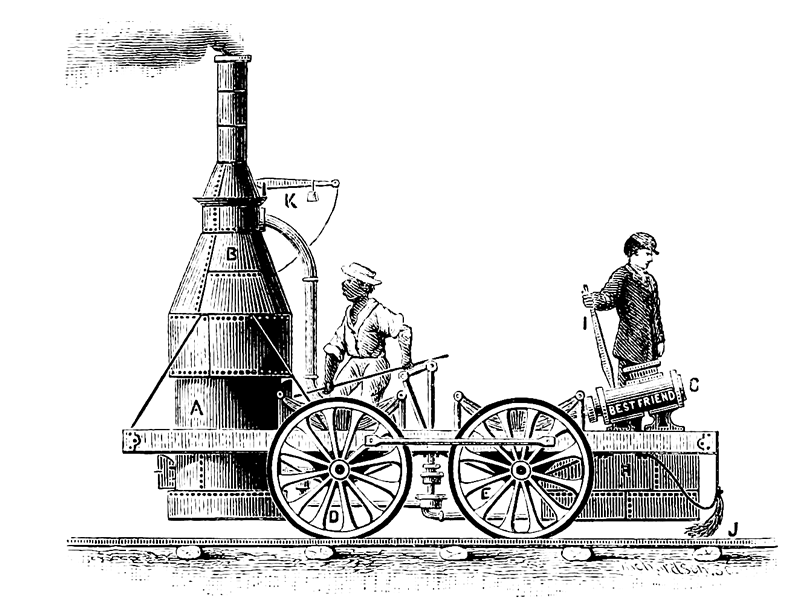
- In 1526, Lucas Vásquez de Ayllón founded San Miguel de Guadalupe, the first white European settlement near present-day Georgetown. The Spanish settlement was unsuccessful and failed within a few months.
- The Stono Rebellion was not the first slave revolt in South Carolina. The enslaved Africans that came with the Spanish colonizers revolted in November 1526. It is said that these enslaved Africans either traveled south as winter approached or was helped by the local Native Americans.
- The Parsonage Provincial Library in Charleston, South Carolina, was the first public lending library in the American Colonies. The library was founded in 1698.
- "Flora," the first opera performed in the United States was premiered in Charleston, South Carolina, on February 8, 1735.
- The Charleston Museum is the first museum in America. The museum was founded in 1773 and opened to the public in 1824.
- Built in 1830, the Best Friend of Charleston was a steam-powered railroad locomotive considered to be the first locomotive built entirely within the United States for commercial service. It produced the first locomotive boiler explosion in the United States.
- Founded in 1770 and chartered in 1785, The College of Charleston was the first municipal college in the nation.
- Built on May 6, 1840, the South Caroliniana Library was the first building to be used solely as a college library.
- South Carolina was the first state to secede from the Union. South Carolina was also one of the eleven states to form the Confederate States of America.
- The First South Carolina Volunteer Infantry was the first black unit of the Union Army during the Civil War. The unit was organized in November of 1862.
- Mount Vernon Mills, the first electric textile plant, opened in Columbia in 1893. The mill is now home to the South Carolina State Museum.
- Strom Thurmond was the first United States Senator to be elected to the U.S. Senate through write-in votes.
Resources
South Carolina Government
Capital of South Carolina: Columbia
Governor: Henry McMaster
Lieutenant Governor: Pamela Evette
Secretary of State: Mark Hammond
Treasurer: Curtis Loftis
Attorney General: Alan Wilson
U.S. Representatives: Joe Wilson, Tom Rice, Jim Clyburn, Nancy Mace, Ralph Norman, Jeff Duncan, and William Timmons
U.S. Senators: Lindsey Graham and Tim Scott
Resources
South Carolina Population
South Carolina is the 23rd largest state in population in the United States. The 2021 population is 5,179,334. Below is a table of the most populated cities and counties in South Carolina.
| Most Populated SC Cities |
|---|
| Charleston - 150,227 |
| Columbia - 136,632 |
| North Charleston - 114,852 |
| Mount Pleasant - 90,801 |
| Rock Hill - 74,372 |
| Greenville - 70,720 |
| Summerville - 50,915 |
| Goose Creek - 45,946 |
| Sumter - 43,463 |
| Florence - 39,899 |
| Most Populated SC Counties |
|---|
| Greenville - 525,534 |
| Richland - 416,147 |
| Charleston - 408,235 |
| Horry - 351,029 |
| Spartanburg - 327,997 |
| Lexington - 293,991 |
| York - 282,090 |
| Berkeley - 229,861 |
| Anderson - 203,718 |
| Beaufort - 187,117 |
Resources
South Carolina State Bird
The Carolina Wren was designated as the official State Bird by Act Number 693 of 1948. This Act repealed an earlier Act designating the Mockingbird as the State Bird. The Carolina Wren is found in all areas of South Carolina. It is a small bird with a conspicuous white stripe over the eyes.
Resources
South Carolina State Butterfly
The beautiful Eastern Tiger Swallowtail (Papilio glaucus) butterfly was designated the official Butterfly of the State by Act Number 319 of 1994. The Eastern Tiger Swallowtail can be seen in deciduous woods, along streams, rivers and wooded swamps, and in towns and cities throughout South Carolina.
Resources
South Carolina State Flag
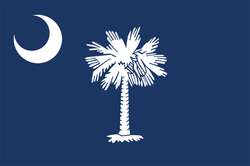
The General Assembly adopted the current version of South Carolina's flag on January 28, 1861. This version added the Palmetto tree to the original design by Colonel William Moultrie in 1775 for use by South Carolina troops during the Revolutionary War.
What does everything mean on the State Flag?
- The blue color of the flag represents the color of the uniforms South Carolina troops used during the Revolutionary War.
- The crescent moon represents the silver emblem that was worn on the front of the soldier's caps.
- The Palmetto Tree symbolized Colonel Moultrie's heroic defense of the palmetto-log fort on Sullivan's Island against the attack of the British fleet.
Did you know that there are serious consequences for vandalizing the State Flag?
- Any person who mutilates, injures, or desecrates the State Flag, wherever displayed, shall be guilty of a misdemeanor, punishable by a fine of not more than $100 or by imprisonment for not more than 30 days or both.
There is a pledge that goes with the State Flag!
- The official State Pledge to the Flag of South Carolina was adopted by Act Number 910 of 1966. Mrs. John R. Carson wrote the pledge in 1950, and it goes: "I salute the flag of South Carolina and pledge to the Palmetto State love, loyalty, and faith."
Resources
South Carolina State Fossil
The Columbian Mammoth (Mammuthus columbi) was designated as the official State Fossil by Act Number 177 of 2014. The Columbian mammoth was named after Christopher Columbus. The discovery of fossilized mammoth teeth in a South Carolina swamp in 1725 was credited as the first scientific identification of a North American vertebrate fossil.
Resources
South Carolina State Poet Laurate
The official State Poet Laureate was designated by Joint Resolution Number 736 of 1934. This resolution allows the Governor to appoint a Poet Laureate for the State. In 2003, former Governor Mark Sanford named Marjory Heath Wentworth as South Carolina's sixth Poet Laureate.
Resources
South Carolina State Reptile
The Loggerhead Turtle (Caretta caretta) was designated as the official State Reptile by Act Number 588 of 1988 as a result of a request by a fifth-grade class from the town, Ninety-six in Greenwood County. South Carolina's coast is one of the Loggerhead nesting areas, and nest protection projects have been established along the South Carolina coast to increase hatchling productivity.
Resources
South Carolina State Seal
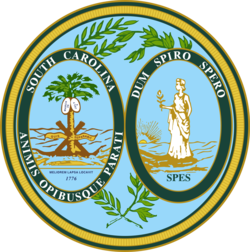
South Carolina's State Seal was designed by William Henry Drayton and Arthur Middleton in 1776. John Rutledge, the President of the Provincial Congress of South Carolina, used the Seal for the first time on May 22, 1777. The current seal is made up of two elliptical areas linked by branches of the palmetto tree. The left oval is the palmetto tree with a fallen oak at the base. The right oval is the goddess Spes (Hope) walking on the beach at dawn over discarded weapons.
Resources
South Carolina State Songs
South Carolina has two official State Songs: "Carolina" and "South Carolina on My Mind."
"Carolina" was written by Henry Timrod and set to music by Anne C. Burgess. On February 11, 1911, the song was designated as the State Song by a Concurrent Resolution.
"South Carolina on My Mind" was composed and recorded by Hank Martin and Buzz Arledge in 1980. On March 8, 1984, the song was designated as the State Song by Act Number 302 of 1984.
Resources
South Carolina State Spider
The skittish Carolina Wolf Spider (Hogna carolinensis) was designated as the official State Spider by Act Number 389 of 2000. The Carolina Wolf Spider is the largest species of wolf spider in North America. While skittish and large, the wolf spider is generally not aggressive.
Resources
South Carolina State Stone
Blue Granite is a type of igneous rock that is one of the hardest substances in the world. The Blue Granite was designated as the official State Stone by Act Number 345 of 1969. Surprisingly, South Carolina was known to have been one of the nation's top producers of granite.
Resources
South Carolina State Tree
The hardy Palmetto Tree (Inodes palmetto or Sabal palmetto) was designated as the official State Tree by Joint Resolution Number 63 on March 17, 1939. It is believed that the Palmetto tree was symbolical of the defeat of the British fleet at Fort Moultrie on Sullivan's Island due to the fact that the Palmetto logs absorbed the impact of the cannonballs.
Resources
South Carolina State Vegetable
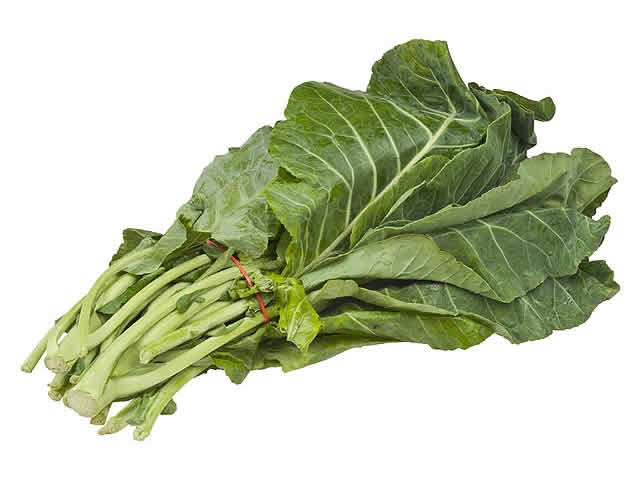
Big, green, and leafy, Collard Greens (Brassica oleracea var. viridis) was designated as the official State Vegetable by Act Number 38 of 2011, as a result of efforts by Mary Grace Wingard, a third-grader from Lexington, South Carolina. South Carolina ranks second in the nation in collard green production.
Resources
South Carolina's Nickname
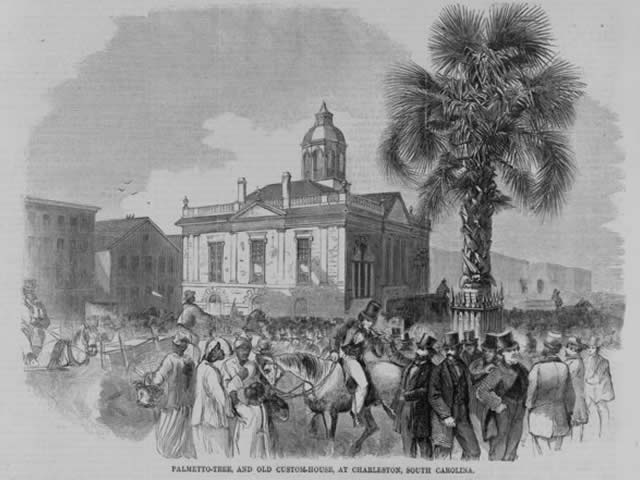
South Carolina is known as the Palmetto State in honor of the Palmetto tree, but did you know that South Carolina was nicknamed the Iodine State at one point? South Carolina received this name due to the large percentage of iodine found in the vegetation growing in the state.
Resources
The Mace of the South Carolina House of Representatives
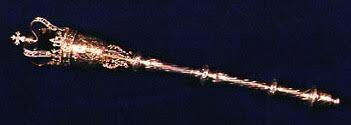
The South Carolina House of Representatives Mace is the oldest legislative mace in use in the United States. The Mace was made in London by Magdalen Feline in 1756. Upon the opening of the session, the Sergeant-at-Arms will bear the mace ahead of the Speaker and lay it upon a specially prepared rack on the rostrum in front of the Speaker. The Mace remains on its rack until recess or adjournment.
Resources
The State Sword of South Carolina
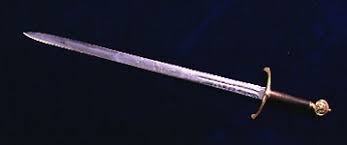
The State Sword of South Carolina is a symbol for the South Carolina Senate and is placed in a cradle on the Senate rostrum whenever the Senate is in session. The current Sword was presented to the Senate on February 20, 1951, as a gift to South Carolina by Lord Halifax, former British ambassador to the United States, after learning of the theft of the original sword.
Resources
Copyright © 2025. All rights reserved.

